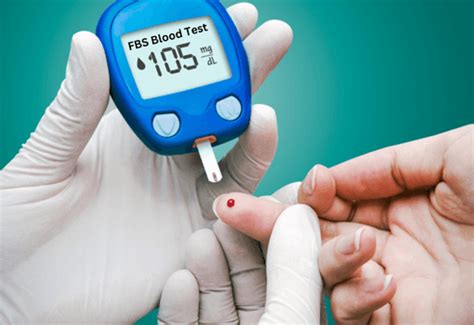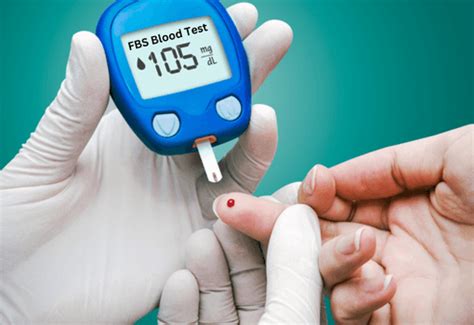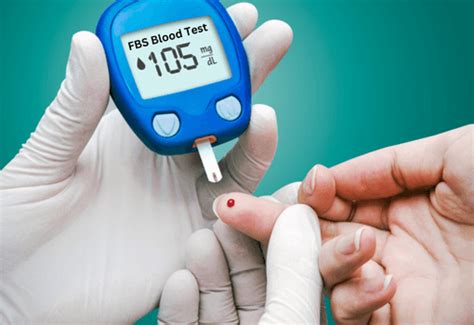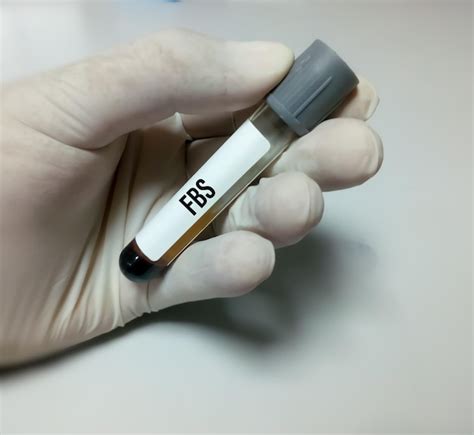Intro
The FBS blood test, also known as the Fasting Blood Sugar test, is a crucial diagnostic tool used to measure the level of glucose in the blood after a period of fasting, typically 8-12 hours. This test is essential for diagnosing and monitoring diabetes, a chronic condition that affects millions of people worldwide. The FBS test is a simple, yet effective way to assess the body's ability to regulate blood sugar levels, and it plays a vital role in the early detection and management of diabetes.
The importance of the FBS blood test cannot be overstated, as it provides valuable insights into the body's glucose metabolism. By measuring the level of glucose in the blood after a period of fasting, healthcare professionals can determine if an individual has diabetes or is at risk of developing the condition. The test is also used to monitor the effectiveness of treatment plans and make adjustments as needed. In addition to its diagnostic value, the FBS test can also help identify other health conditions, such as insulin resistance and metabolic syndrome.
The FBS blood test is a relatively straightforward procedure that involves drawing a blood sample from a vein in the arm. The sample is then sent to a laboratory for analysis, where the level of glucose is measured using a specialized device. The results are typically available within a few hours, and they are usually reported in milligrams per deciliter (mg/dL) or millimoles per liter (mmol/L). A normal FBS reading is typically between 70-99 mg/dL, while a reading of 100-125 mg/dL may indicate impaired fasting glucose. A reading of 126 mg/dL or higher is usually diagnostic of diabetes.
FBS Blood Test Procedure

The FBS blood test procedure is relatively simple and painless. The test is usually performed in the morning, after a period of fasting, typically 8-12 hours. The patient is required to abstain from food and drink, except for water, during the fasting period. The test is usually performed in a healthcare setting, such as a doctor's office or hospital, and it involves the following steps:
- The patient is asked to sit comfortably and expose their arm.
- A tourniquet is applied to the upper arm to help locate the vein.
- A needle is inserted into the vein, and a blood sample is drawn.
- The tourniquet is removed, and the needle is withdrawn.
- The blood sample is sent to a laboratory for analysis.
Preparation for the FBS Blood Test
To prepare for the FBS blood test, patients are required to fast for a period of 8-12 hours. This means abstaining from all food and drink, except for water, during the fasting period. Patients should also avoid strenuous exercise and smoking during the fasting period, as these can affect the test results. It is essential to follow the instructions provided by the healthcare professional to ensure accurate test results.FBS Blood Test Results

The FBS blood test results are usually reported in milligrams per deciliter (mg/dL) or millimoles per liter (mmol/L). A normal FBS reading is typically between 70-99 mg/dL, while a reading of 100-125 mg/dL may indicate impaired fasting glucose. A reading of 126 mg/dL or higher is usually diagnostic of diabetes. The test results can be interpreted as follows:
- Normal: 70-99 mg/dL
- Impaired fasting glucose: 100-125 mg/dL
- Diabetes: 126 mg/dL or higher
FBS Blood Test and Diabetes
The FBS blood test is a crucial diagnostic tool for diabetes, a chronic condition that affects millions of people worldwide. Diabetes is characterized by high blood sugar levels, which can damage organs and tissues over time. The FBS test can help diagnose diabetes and monitor the effectiveness of treatment plans. The test can also help identify other health conditions, such as insulin resistance and metabolic syndrome, which are associated with an increased risk of developing diabetes.FBS Blood Test and Insulin Resistance

Insulin resistance is a condition in which the body's cells become less responsive to insulin, a hormone produced by the pancreas that regulates blood sugar levels. Insulin resistance is a precursor to diabetes and can be diagnosed using the FBS blood test. The test can help identify individuals who are at risk of developing diabetes and monitor the effectiveness of treatment plans.
FBS Blood Test and Metabolic Syndrome
Metabolic syndrome is a cluster of conditions that increase the risk of developing diabetes and cardiovascular disease. The FBS blood test can help diagnose metabolic syndrome and monitor the effectiveness of treatment plans. The test can also help identify other health conditions, such as high blood pressure and high cholesterol, which are associated with an increased risk of developing metabolic syndrome.FBS Blood Test Benefits

The FBS blood test has several benefits, including:
- Early detection of diabetes and other health conditions
- Monitoring of treatment plans and adjustment of medication
- Identification of insulin resistance and metabolic syndrome
- Assessment of the risk of developing cardiovascular disease
- Monitoring of blood sugar levels in individuals with diabetes
FBS Blood Test Risks and Complications
The FBS blood test is a relatively safe procedure, but it can cause some risks and complications, including: * Pain and bruising at the injection site * Infection at the injection site * Allergic reactions to the needle or antiseptic * Fainting or dizziness due to low blood sugar levelsFBS Blood Test Preparation Tips

To prepare for the FBS blood test, patients should:
- Fast for a period of 8-12 hours before the test
- Avoid strenuous exercise and smoking during the fasting period
- Drink plenty of water during the fasting period
- Avoid eating high-sugar foods and drinks before the test
- Inform their healthcare provider of any medications or supplements they are taking
FBS Blood Test FAQs
Here are some frequently asked questions about the FBS blood test: * What is the FBS blood test used for? * How is the FBS blood test performed? * What are the risks and complications of the FBS blood test? * How long does it take to get the results of the FBS blood test? * What do the results of the FBS blood test mean?What is the FBS blood test used for?
+The FBS blood test is used to measure the level of glucose in the blood after a period of fasting, typically 8-12 hours. It is used to diagnose and monitor diabetes, as well as to identify other health conditions, such as insulin resistance and metabolic syndrome.
How is the FBS blood test performed?
+The FBS blood test is performed by drawing a blood sample from a vein in the arm. The sample is then sent to a laboratory for analysis, where the level of glucose is measured using a specialized device.
What are the risks and complications of the FBS blood test?
+The FBS blood test is a relatively safe procedure, but it can cause some risks and complications, including pain and bruising at the injection site, infection at the injection site, and allergic reactions to the needle or antiseptic.
In conclusion, the FBS blood test is a crucial diagnostic tool for diabetes and other health conditions. It is a simple, yet effective way to assess the body's ability to regulate blood sugar levels, and it plays a vital role in the early detection and management of diabetes. By understanding the benefits and risks of the FBS blood test, patients can take an active role in their healthcare and make informed decisions about their treatment plans. We encourage readers to share their experiences and ask questions about the FBS blood test in the comments section below.
